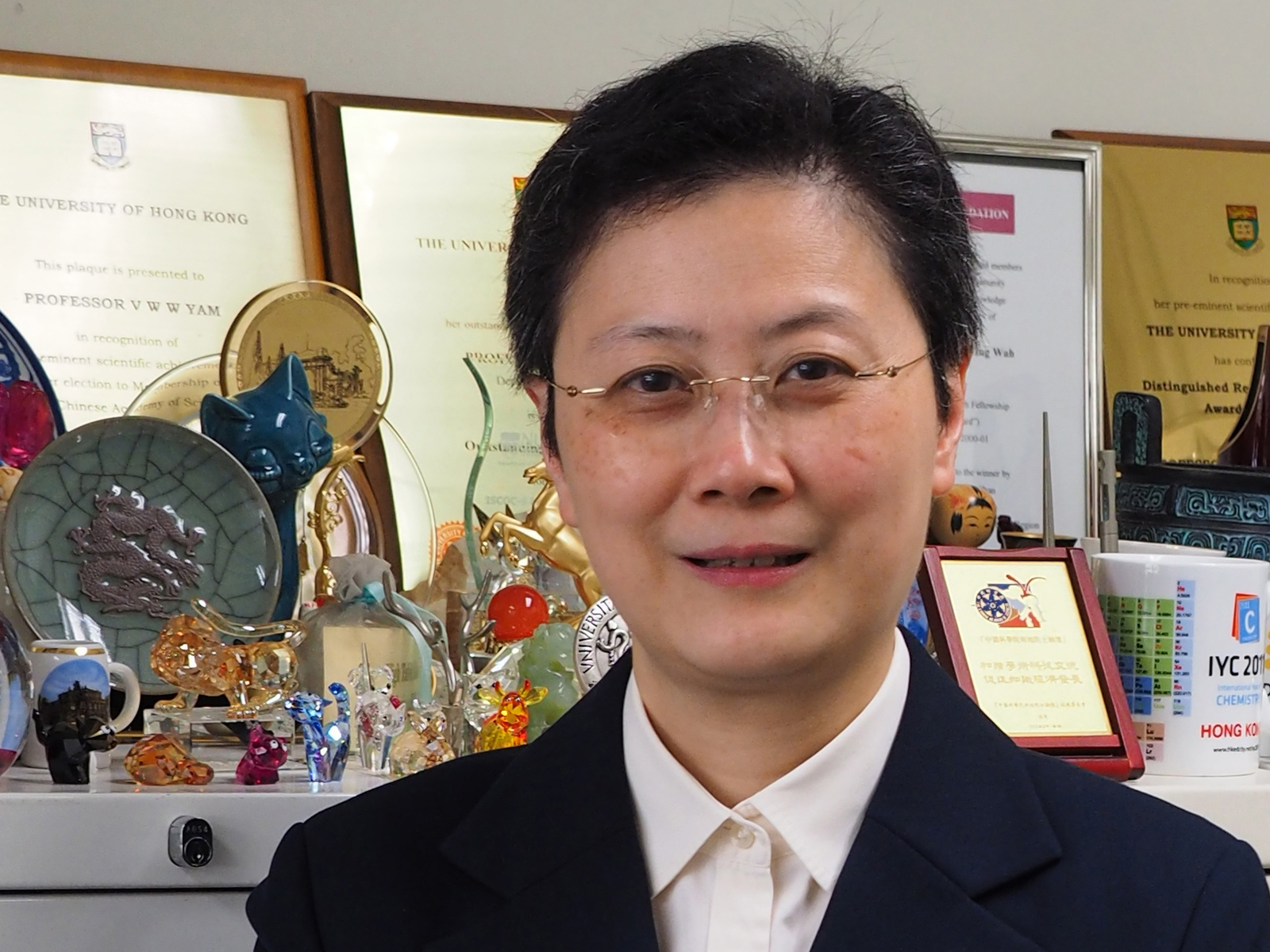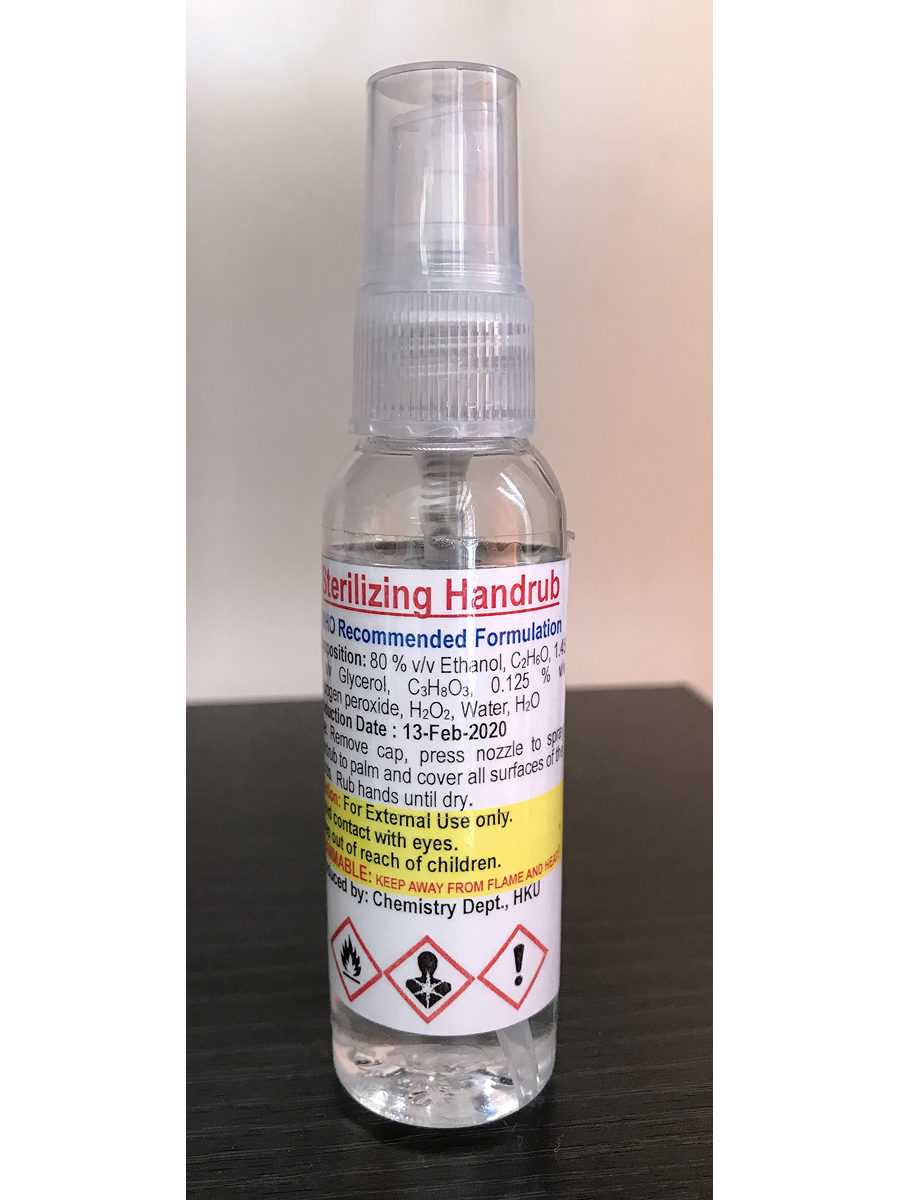Celebrating 10 years of Chemical Science: Control beyond the molecule

Professor Vivian Yam is a long-serving member of the Chemical Science Advisory Board. Picture: © Vivian Yam
Professor Vivian Yam has published over 10 research papers with Chemical Science over the past 10 years. As a long-serving member of the Chemical Science Advisory Board, we took this opportunity to catch up with her.
Vivian is an inorganic and organometallic chemist based at the University of Hong Kong. She is primarily a synthetic and physical inorganic chemist, and through careful control is able to prepare functional materials for a huge variety of applications, as demonstrated throughout her impressive career.
During such unprecedented times, how you are managing to push forward with your research?
We are fortunate that Hong Kong has been able to carry on almost as usual. However, I am keeping my lab in low-density mode, with two shifts for students during the most critical times. One issue we do have is that some of my students need to collect data from synchrotron facilities in Shanghai and Beijing, which obviously is not currently possible, so there are some delays on that side.
To help as much as we can, the Department of Chemistry has been preparing its own hand sanitiser at the University of Hong Kong, and has been distributing to those most in need within the community.

What excites you most about your area of research and what has been the most exciting moment of your career so far?
I conduct research on metal complexes. You can control the colour of these complexes through careful design of the ligands or the metal centres, in order to make diverse materials. However, in order to take this further, we have been able to utilise the packing of the molecules to control their properties and morphologies through the non-covalent metal-metal interactions that form. This gives you an additional dimension to work with. Our challenge is to find how to best manipulate the supramolecular assembly of our complexes. This is a lot of fun.
With such truly wide-ranging applications, this work is very exciting and enables great collaboration across a broad range of fields.
Once, we were just playing around with some highly soluble metal complexes that show yellow solution colour and orange emission originating from the metal-to-ligand charge transfer excitation. Upon adding a poor solvent, instead of the complexes precipitating out which is what would normally happen, we observed a colour change from yellow to blue due to the resulting close interaction of the metal centres. From these originally yellow or orange light emitters, they now emit in the red to NIR region. This is something we really didn’t expect.
You have published over 10 papers with Chemical Science. Of these papers, which one do you feel has made the most significant contribution to your area of research and why?
Actually, there would be more than one. I love the papers that I have published with Chemical Science!
Through our contributions in 2012, 2013, 2013, 2013, 2014, 2017 and 2019, we have been able to demonstrate enhanced levels of control over a variety of systems. We have prepared molecular tweezers with enhanced solubility that enabled us to study their properties, foldamers and columnar stacks, and sheet-like structures that we have been able to convert to cylindrical rod-like structures. I love our most recent contribution this year, where we were able to make use of platinum compounds as non-covalent cross-linkers to make DNA hydrogels.
You have also been an active member of the Chemical Science Advisory Board for many years. How do you feel the journal has developed over this time, and what would you say are the strengths of the journal?
I think Chemical Science has grown tremendously. It is a fantastic journal. The best thing about Chemical Science is that it is open access, but the author does not have to pay for this service. I have also experienced great turnaround times, and the editorial team has been fantastic.
As a member of the Advisory Board, I have really enjoyed being able to contribute to the development of the journal. I feel that Chemical Science has really now taken on board considerations around early-career researchers and how to provide the best experience for them.
Over the years, I have also loved taking part in a number of different ISACS conferences across the world. One of these was actually in Hong Kong, which had such an incredible line-up of speakers. It was great to host people from across the world, although we did have a strong typhoon warning so we were all trapped in the hotel! We still had a fantastic time though.
The year is 2030. How do you feel your area of research will have advanced by this time?
We would like to further manipulate the molecular configurations and supramolecular assembly of our systems in order to perturb the electronic communication and coupling, which will have a strong impact on the functional properties of the systems. I want to not just control the microscopic properties but also the macroscopic ones, which will allow us to start looking into photomachinery/photoactuator applications. Advancements in emitters of Earth-abundant elements will also be made. Exploring control of the excited state rather than the ground state will greatly expand our library of molecules and applications even further, which is something that we don’t have as much control over as this stage.
10th anniversary collection
To celebrate the 10th anniversary of Chemical Science we are publishing a number of special birthday issues, to recognise and thank members of our community who have been supporting the journal and publishing in Chemical Science since we launched ten years ago.